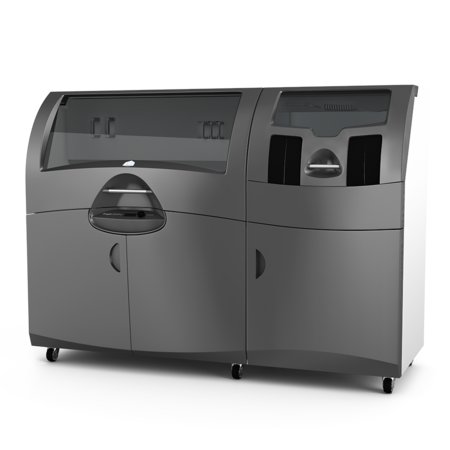A visit to a resort or city center designed by The Jerde Partnership offers convincing evidence of the firm's unique "placemaking" vision. This vision is concerned with creating memorable places where people can gather and experience community. Jerde is the firm behind the Bellagio resort in Las Vegas, the 1984 Olympic Games in Los Angeles, and the Mall of America. Nearly 100 other Jerde-designed places grace cities like Budapest, Hong Kong, Los Angeles, Osaka, Rotterdam, Seoul, Shanghai and Tokyo. More projects are currently under construction in Dubai, Hangzhou, Istanbul and Warsaw.
Challenge
Time and Expense of Model Creation
No matter how sublime, an architectural vision can't be realized until the client embraces the concept. Traditionally, physical architectural models, painstakingly made by hand, are the medium for conveying an architectural vision. Such models, however, often require the architect to consult at length with a specially trained modeler to communicate a wealth of design information. This step can even require architects to translate initial formal concepts into detailed drawings simply to enable physical model construction.
This laborious process is what prompted the Jerde Partnership, based in Los Angeles, to turn to 3D printing as one of its architectural modeling methods, a solution that has saved considerable time and money while dramatically improving the firm's ability to sell its vision.
"We considered this purchase for months," says Al Vass, an associate vice president and senior project designer at Jerde.
In early 2005, Jerde thoroughly investigated and tested many of the major 3D printing technologies.
Solution
Speed and Affordability of CJP
As part of his comparison, Vass created three test files and sent one set each to Dimension and 3D Systems. He discovered that some other printers failed to properly build the models. "All three built up well with the Color Jet Printer, and we were surprised with the superior speed and resolution," says Vass. "We decided to go with it because of its efficiency and ability to print difficult pieces. Moreover, the printed model requires no supports that need to be removed after printing. It was also faster by far and more economical in material use. The choice became clear."
Results
Far More Efficient Model Production and New Ability to Collaborate
The Jerde Partnership's 3D printing capability lets the firm create more models faster, as well as produce models it never would have been able to build by hand. For example, within weeks of the printer purchase in late 2005, the firm presented a San Diego waterfront design that was very well received. The intricate physical model vividly demonstrated the way Jerde's concept enhanced the waterfront without altering its character. The model would have taken an entire team a week to make by hand, including an exhaustive translation of big concepts to AutoCAD® drawings. Instead, Vass prepped and printed the model in less than half a day on the ProJet CJP 360, skipping the AutoCAD translation step entirely. The printer prints straight from Jerde's design tool of choice, Autodesk® 3D Studio MAX®.
The more detailed and complex the model, Vass explains, the greater the advantage that 3D printing presents. Vass estimates it's twice as efficient for the firm to print a simple model than make it by hand, even considering manual post-processing time. He says the Color Jet printer is "exponentially" more efficient, however, to print experimental parts, organic surfaces and complex geometrical shapes like Jerde's undulating glass roof at Zlote Tarasy in Warsaw, Poland, and their dazzling canopy at the Morongo Casino in California.
The Jerde Partnership is using the printer on a daily basis to model everything from walk-up kiosks to vast cityscapes. Its investment in the Color Jet printer is an extension of the firm's early and innovative adoption of new technology. The firm has even used plug-ins developed for the video game industry to design complex roof surfaces. Three-dimensional printing also makes it easy to create multiple models of the same project as it proceeds.
The 3D printer is especially valuable for young designers. The speed and affordability of printing enables them to learn quickly through liberal trial and error. All architects, meanwhile, appreciate the printer's ability to cost-effectively support the time-honored tradition of collaborating with 3D physical models, which provide invaluable design information.
"Architects just can't collaborate around a napkin or computer file the same way they can around a physical model," Vass says. "Architects need to literally walk around a design, get their hands on it and maybe mark it up with a pen. This process is as vital as presenting to the client and just as rigorous."
The speed and affordability of the printer makes this collaboration happen more easily and more often, both at the Jerde Partnership offices and at client meetings around the globe. The results can be seen and exhilaratingly experienced at the world's most wonderful places.
